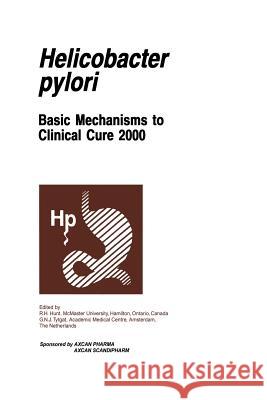Helicobacter Pylori: Basic Mechanisms to Clinical Cure 2000 » książka
Helicobacter Pylori: Basic Mechanisms to Clinical Cure 2000
ISBN-13: 9789401057530 / Angielski / Miękka / 2012 / 689 str.
The fourth meeting in the very successful series Helicobacter pylori: Basic Mechanisms to Clinical Cure was held on the island of Bermuda in late March 2000 and was sponsored by Axcan Pharma. This was only some two years after the third meeting in San Diego, and it seemed hardly possible that there would be so much new information. However, as the contributions in this volume testify, there was plenty of exciting new information with important implications for both understanding this infection and for clinical management. Some of this information was of a fundamental nature, such as the role of the acid sensitive ureI channel in regulating the influx of urea and the formation of transported ammonia back in the microbial perisplasmic space to neutralize acid; the observation of genetic polymorphism of the IL-1beta gene as an explanation of achlorhydria and gastric cancer risk in the first-degree relatives of gastric cancer patients; and the peculiar biochemical and physiological consequences of the genome of the microorganisms. The format of the meeting, with short fifteen-minute state-of-the-art presentations by world experts closely involved in Helicobacter research followed by ample time for panel discussions, was again followed this year. Traditional aspects included detailed study of the microbial characteristics, the novel Helicobacters, the interaction with the human host, the peculiarities of the inflammatory immune response, the short and long-term mucosal consequences, the effects on acid secretion, the problem of gastric malignancy, and the therapeutic possibilities. However, a series of short debates was introduced to highlight controversial issues, such as the pathogenic or commensal role of the organism, the role of virulence factors, the characteristics of the inflammatory immune response, the reversibility of mucosal atrophy and metaplasia, and the primary or secondary role of quadruple therapy, to name just a few. This provocative approach was very successful and provided fuel for further in-depth discussions. These debates have been included in this book in the form of conventional manuscripts in order to maintain the shortest possible production time for the publication of the proceedings. Helicobacter pylori has come a long way since the first meeting in Amelia Island, in 1993, and the science of this organism and the understanding of the consequences of the infection have advanced our knowledge fundamentally and revolutionized our thinking about gastrointestinal disease. We now recognize the existence of more than thirty Helicobacter species, some of which may play a significant role in human disease. The experience gained through our investigation of H. pylori promises to make a significant contribution to the future exploration of the possible role of Helicobacter species in hepatic, biliary, and intestinal diseases.











